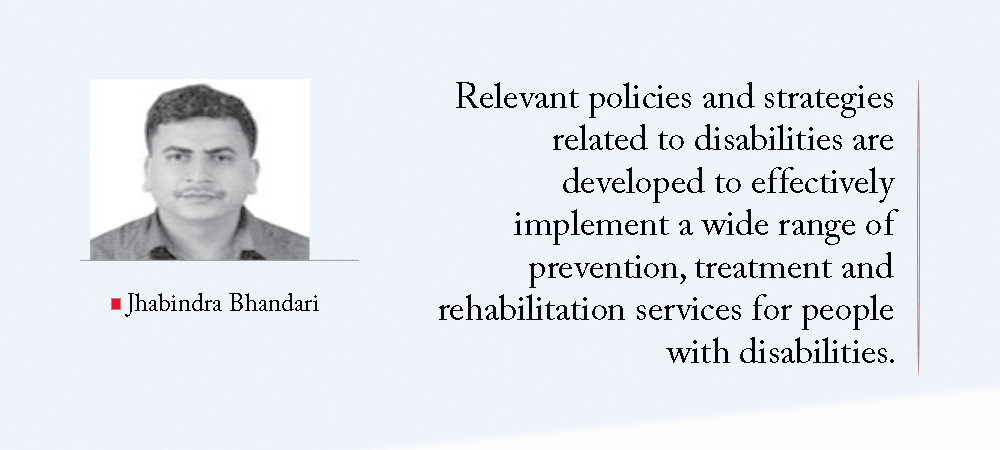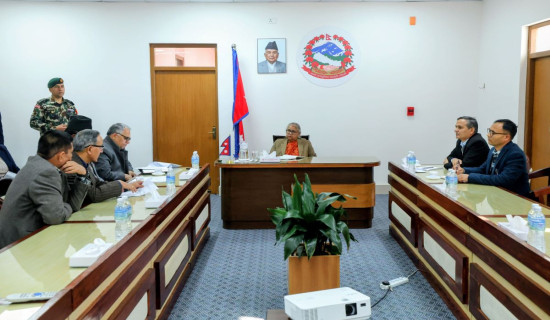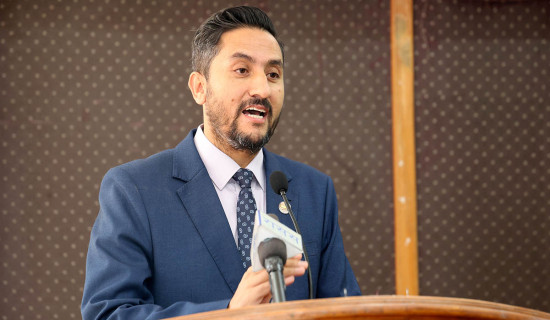- Thursday, 18 December 2025
Promotion Of Disable-friendly Health Services
People with disabilities include those who have long-term sensory, physical, psycho-social, intellectual, or other impairments. According to the World Health Organisation (WHO), the number of people with significant disabilities worldwide is approximately 1.3 billion and represents 16 per cent of the global population. This data shows the scale of disability and an urgent priority of disability inclusive health services.
In most societies, the exclusion and marginalisation of the people with disabilities experience social discrimination and stigma due to their gender identity, age, ethnicity, race, sexual orientation, origin, location, legal status, or on other grounds.
The intersection of gender, age, and disability matters in terms of mobility, vulnerability and access to social protection services. The evidence suggests that women with disability are at greater risk of social exclusion than men and are especially vulnerable to gender-based violence.
Substantial progress
While substantial progress has been made in many countries in recent years, the world is still far from realising the right to the highest attainable standard of health for people with disabilities who continue to experience a wide range of health inequities. Therefore, social determinants of health need to be considered in addressing structural and risk factors that have profound impacts on the lives of people with disability.
People with disabilities have the same, and equal right to the highest attainable standard of health as any human being. The United Nations Convention on the Rights of Persons with Disabilities (CRPD) states that people with disabilities have an equal right to social protection. In this context, safety nets are a type of social protection intervention that target vulnerability and poverty. The CRPD further reinforces the right of persons with disabilities to attain the highest standard of health care without any discrimination.
Several factors determine health status, including individual factors, living and working conditions, general socio-economic, cultural and environmental conditions, and access to health care services. The evidence suggests that people with disabilities experience worse socio-economic outcomes than those without disabilities. Obviously, they face higher level of poverty, lower employment rates, and have less education. They also have unequal access to healthcare services and therefore have unmet healthcare needs compared with the general population.
Notably, Nepal has ratified the CRPD which affirms that people with disabilities have the right to the enjoyment of the highest attainable standard of health without discrimination. All practical measures are needed to ensure access for people with disabilities to health services that are gender-sensitive, including health-related rehabilitation. Further, the Constitution of Nepal, 2015 guarantees human rights and freedom to all citizens and includes provision to improve the lives of people with disability.
Additionally, the Rights of People with Disabilities Act, 2017 supports implementation of Nepal’s commitment to CRPD, and ensures equal access to education, health, employment, physical infrastructure, transportation, information and communication services. This is considered as a major landmark in harnessing opportunities for investments to address unmet health needs of people with disabilities.
In this context, the Ministry of Health and Population with the support from development partners is committed to strengthen disability inclusive health services so that no one is left behind to access the healthcare in the federal context. Relevant policies and strategies related to disabilities are developed to effectively implement a wide range of prevention, treatment and rehabilitation services for people with disabilities. Apart from this, there are critical needs of targeted disability-specific health care services to people with disabilities who are particularly poor and marginalised in their families and communities.
More importantly, National Guidelines for Disability Inclusive Health Services, 2019 aims to provide a strategic and technical guidance to policy makers, planners, managers and service providers in planning and management of disability inclusive health services. However, there is an emerging need of a comprehensive review to identify the existing gaps in the provision of disability inclusive health services, participation of people with disabilities in the federal health systems, challenges and opportunities for multi-sector actions at local level.
Addressing barriers to service delivery should be a high priority agenda for ensuring disability inclusive health services. People with disabilities experience a range of physical, communication, information, and coordination barriers to access health services. For example, physical barriers may be related to the architectural design of health facilities, or to medical equipment, or transportation. Similarly, other barriers to facilities include uneven access to buildings, narrow doorways, internal steps, and limited disability-friendly water, sanitation and hygiene facilities.
Effective coordination
On the other hand, limited knowledge and understanding of disability among healthcare providers often prevents timely and effective coordination of healthcare services. Healthcare workers often lack adequate knowledge and skills on primary and secondary and co-morbid conditions associated with disability and how to effectively manage the health care needs of people with disabilities. Therefore, education and training for health care workers about disability is crucial to increase awareness about the healthcare needs of people with disabilities and improve access to services.
Strengthening disability inclusive health services advances universal health coverage, improves the health and well-being of people with disabilities, harnesses cross-sectoral public health interventions, and protect them in disaster or health emergencies. Therefore, new interventions should include health equity for people with disabilities at the centre of health policies and strategic action plans. More importantly, it is urgent to ensure empowerment and meaningful participation of people living with disabilities while planning and implementation of disability inclusive health services at all levels.
(PhD in global health, Bhandari writes on health and development issues.)
















